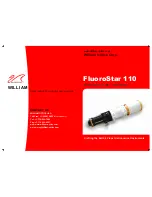
3
C
ongratulations on your purchase of a precision Orion telescope. Your new SpaceProbe 3" Altazimuth
Reflector is a terrific starter instrument for exploring some of the many exotic wonders our universe has
to offer. Designed to be lightweight and easy to use, this telescope will provide many hours of enjoyment
for the whole family. It is your ticket to a visual voyage into space, which you will soon find out contains
much more than just pinpoint stars.
With the SpaceProbe 3" you’ll marvel at the stunning variety of mountains, craters, and valleys on the
surface of our nearest celestial neighbor, the Moon. Looking farther out into the solar system, you’ll be
awed by Saturn’s rings and by the perpetual dance of Jupiter’s brightest moons. And gazing still farther
into space, you’ll be able to locate dozens of mind-boggling “deep-sky” objects—sparkling star clusters,
glowing nebulas, and incredibly distant galaxies—that will dazzle and amaze you.
If you have never used a telescope before, we would like to welcome you to amateur astronomy, which
we hope will become a lifelong hobby for you. Take some time to familiarize yourself with the night sky.
Learn to recognize the patterns of stars in the major constellations; a star wheel, or planisphere, avail-
able from nature stores or astronomical suppliers, will greatly help. With a little practice, a little patience,
and a reasonably dark sky away from city lights, you’ll find your telescope to be a never-ending source
of wonder, exploration, and relaxation.
Table of Contents
1. Terminology .......................................................................................................................... 3
2. Parts List............................................................................................................................... 4
3. Getting Started ..................................................................................................................... 4
4. Using Your Telescope ........................................................................................................... 4
5. Observing Tips and Techniques ........................................................................................... 5
6. Astronomical Viewing ........................................................................................................... 5
7. Collimating the Optics (Aligning the Mirrors)........................................................................ 6
8. Care and Maintenance ........................................................................................................... 7
9. Specifications.......................................................................................................................... 7
WARNING:
Never look directly at the
Sun through your telescope or its finder
scope—even for an instant—without
a professionally made solar filter that
completely covers the front of the
instrument, or permanent eye damage
could result. Be sure to also cover
the front of the finder scope with aluminum
foil or another opaque material to prevent
physical damage to the internal
components of the scope itself as well as to
your eye. Young children should use this
telescope only with adult supervision.
1. Terminology
Altazimuth Mount A simple type of telescope mount that
allows the telescope to be moved in two perpendicular direc-
tions: up and down (altitude) and sideways (azimuth).
Eyepiece A lens-containing piece that magnifies the image
formed by the telescope and allows your eye to focus on it.
Eyepieces of different focal lengths will produce different
magnification factors.
Finder Scope A small, low-power telescope with crosshairs,
mounted on the optical tube to aid in pointing the telescope.
Its wide field of view greatly reduces the work of finding a faint
object in the main eyepiece of the telescope.
Altitude micro-motion A threaded rod that is anchored to the
altazimuth mount (or slow-motion) control on one end and to
the telescope tube on the other. A thumbwheel on the rod can
be turned to slowly lengthen or shorten its length, resulting in
minute changes in the pointing altitude of the telescope.
Optical Tube The main body of the telescope that holds the optics.
Primary Mirror The large, curved mirror located at the back
end of the optical tube.















